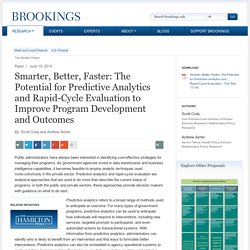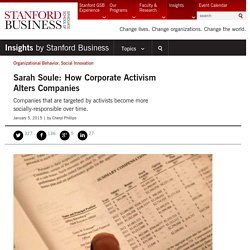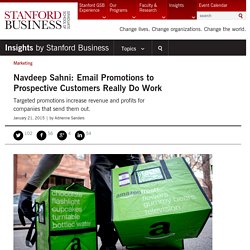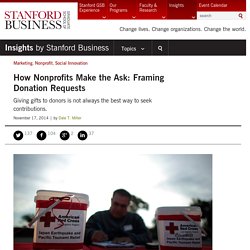

@nonprofit_tech/data on Twitter. The Latest Visual Content Trends: What's Going to Be Hot in 2015 [Infographic] Creative trends can be fickle.
![The Latest Visual Content Trends: What's Going to Be Hot in 2015 [Infographic]](http://cdn.pearltrees.com/s/pic/th/latest-content-marketing-100813050)
Remember those super glossy CTAs that used to be on every website? Now, flat, minimalistic design is in. Whether you're a seasoned or amateur designer, no marketer should be in the dark about the latest design trends. So what's in store for 2015 in the creative world? Using their impressive collection of video clips, music tracks, and over 47 million images, Shutterstock created an infographic that predicts this year's up-and-coming design trends. Check it out below to learn what visual content marketing trends are on the up-and-up around the world. Smarter, Better, Faster: The Potential for Predictive Analytics and Rapid-Cycle Evaluation to Improve Program Development and Outcomes. The Hamilton Project By: Scott Cody and Andrew Asher Public administrators have always been interested in identifying cost-effective strategies for managing their programs.

As government agencies invest in data warehouses and business intelligence capabilities, it becomes feasible to employ analytic techniques used more-commonly in the private sector. Predictive analytics and rapid-cycle evaluation are analytical approaches that are used to do more than describe the current status of programs: in both the public and private sectors, these approaches provide decision makers with guidance on what to do next. Predictive analytics refers to a broad range of methods used to anticipate an outcome. Rapid-cycle evaluation, another decision-support approach, uses evaluation research methods to quickly determine whether an intervention is effective, and enables program administrators to continuously improve their programs by experimenting with different interventions. Sarah Soule: How Corporate Activism Alters Companies.
Corporate protests such as picketers can hurt a company stock price.

But what are the effects of shareholder activism on social issues? A new study shows that it too has consequences, even when it seems to do nothing in the short term. In these kinds of protests, activists buy stock so they can participate in the corporate structure and push for resolutions — which often show up in other shareholders’ mailboxes in the form of thick white packets calling for votes on social issues. Although these resolutions often go nowhere, the protests themselves bring attention to the issue and show investors that corporations are dealing with potential issues, according to research by Sarah Soule, a professor of organizational behavior at Stanford Graduate School of Business. For the activists, she says, the corporate responses also mean they increasingly get a say in how a corporation handles such issues.
Sarah Soule As for corporations, they can look at it two ways, Soule says. Navdeep Sahni: Email Promotions to Prospective Customers Really Do Work. Anyone who shops online knows what it is like to be pestered with email messages offering discounts and deals urging the recipient to “buy now!”

The good news for advertisers is that those promotions actually work, according to new research by Navdeep Sahni, a marketing professor at Stanford Graduate School of Business. Such targeted discounts increase revenue and profit for the companies that send them out. But they are effective in a different way than you might expect. While consumers may not jump on the specific offer emailed to them, they do buy more products — in this case, tickets — soon after the offer comes through. Sahni found that targeted email offers increased consumer spending on a large ticketing platform during the time the discounts were active — but only 10% of that was through redemption of the offers. The upshot: Targeted email marketing serves a more general function of advertising, prompting people to visit a website and buy a variety of products over time.
How Nonprofits Make the Ask: Framing Donation Requests. Perhaps the biggest dilemma for a nonprofit organization is figuring out which campaigns persuade donors to give generously and which ones cause them to walk away or give meager amounts.

Thinking about this reminds me of an old joke that illustrates the effectiveness of intellectual framing: Two seminarians ask their superiors for permission to smoke. The first seminarian comes back dejected. The second one returns happy that his request had been granted. What was the difference between the two? The first one asked if it was OK to “smoke while praying.” Along with PhD student Julian Zlatev, I recently looked at how this question of framing — which led to the second seminarian’s success — plays out in the world of charitable donations.
In a series of eight studies, we gave 1,297 people hypothetical situations designed to determine under what circumstances they would give or give more. We replicated the results with 139 people in a mall in San Jose, Calif. Dale T. Dale T.